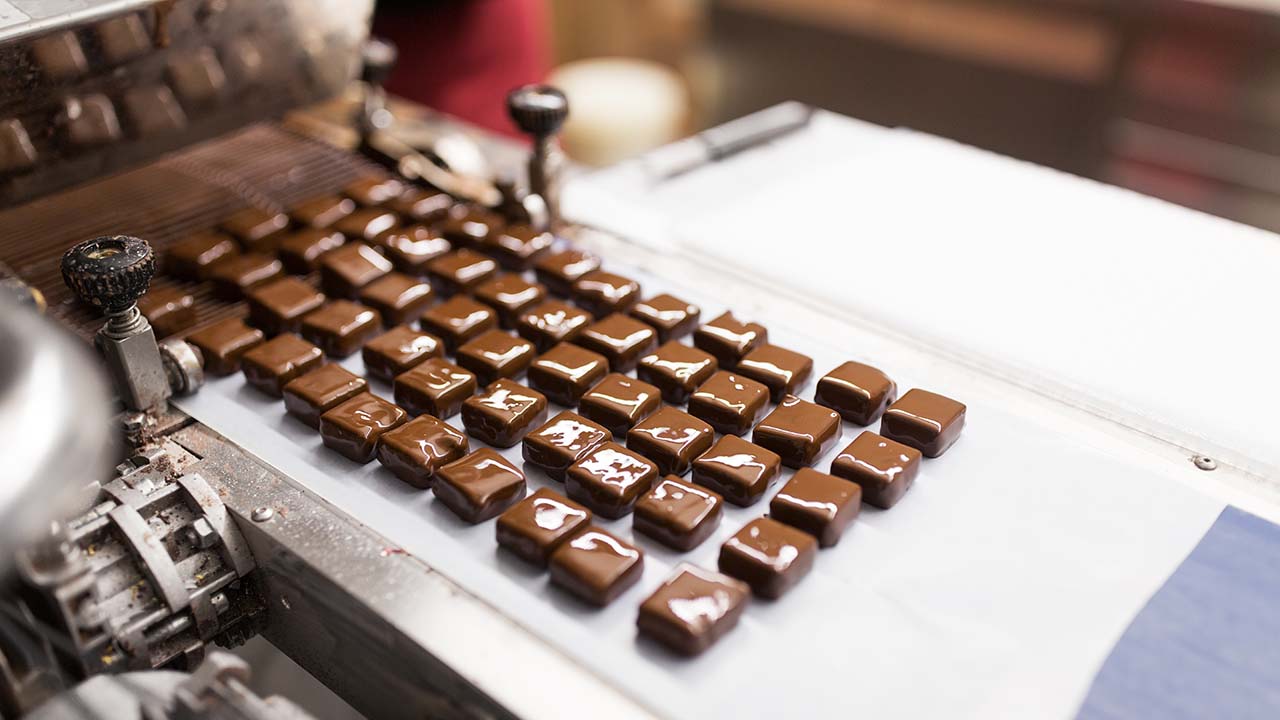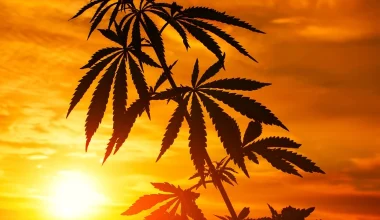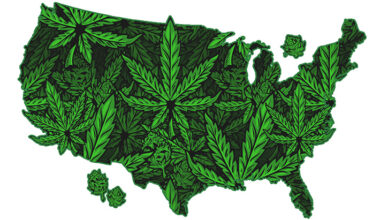Winter is peak season for marijuana-infused chocolates, according to edibles manufacturers and Seattle-based cannabis data provider Headset.
“January and February are our strongest chocolate sales months,” Christine Apple, founder and CEO of Oregon-based edibles manufacturer Grön, told MJBizDaily.
Grön operates in six states and Canada – and she plans to launch operations in three more states in 2025.
But as Grön has expanded to become a marijuana multistate operator, the chocolate segment of the infused-edibles category has lost market share to gummies, a development Apple finds disappointing despite her company’s success in the gummy category.
Chocolate “is so underrated, and nobody gives it the attention it deserves,” she said.
Apple said about 70% of Grön’s sales come from gummies, while chocolates make up a little more than 20% of sales.
“It breaks my heart that it’s not more,” she said.
Chocolate market data
Infused chocolate products make up 9.4% of edibles sales in U.S. cannabis markets tracked by Headset, while in Canada, 14.2% of all edibles sales are chocolate.
Tilray Brands-owned Chowie Wowie is the No. 1 infused chocolate product in Canada, with sales up 35% year-over-year, according to Headset.
And while chocolates are still far from reaching the total edibles market share enjoyed by gummies in both countries (more than 75%), Blair MacNeil, president of Tilray Canada, believes chocolates are on the cusp of a resurgence.
“Non-infused chocolate in the marketplace is growing at five times what infused chocolate is growing at,” MacNeil told MJBizDaily.
“That would tell me there’s a built-up demand … that I think will make its way into the THC-infused side.”
According to data from Germany-based Stastia and San Francisco-headquartered Grand View Research, the non-infused chocolate market is expected to grow by 4%-5% per year until 2030, with revenue already surpassing $120 billion per year.
Infused chocolate production
To accommodate the expected demand, MacNeil said Tilray Canada is investing in increased capacity for infused chocolate production.
Manitoba Harvest, Tilray’s sister company, “has incredible experience on the food side,” MacNeil said.
“So, we’ve been leveraging some of their food scientists to help us … on both gummies and on chocolate.”
MacNeil said to create Chowie Wowie chocolates – sold in peanut butter, praline and soft caramel, among other flavors – Tilray infuses the chocolate then wraps it around the filling.
“After the product is created and mixed … then it goes through a cooling tunnel, which sets everything,” he said.
When developing a confectionary kitchen, Apple said making gummies and chocolate in the same place can be a challenge.
For example, boiling the mixture for gummies creates steam, and chocolate is hydrophobic, meaning it hates water.
That makes manufacturing gummies and chocolate in the same space a challenge, Apple said, adding, “You have to alternate.
“Chocolate generally wants to be in a space that is less than 50% humidity; we don’t let our chocolate rooms get over 70-71 degrees (Fahrenheit) or so,” she said, adding that tempering chocolate is what creates the snap when you break a chocolate bar.”
Grön keeps its delivery vans around 65 degrees when transporting edibles to retailers and encourages stores not to refrigerate products because that can lead to a white film being formed when the chocolate readjusts to room temperature.
Dusty-appearing chocolate is caused by fat and sugar separating, something that can happen when chocolate is not tempered properly, Apple said.
Although even when chocolate separates, it is still shelf stable.
“Chocolate will literally last forever,” she said.
Price of cacao
According to the West Africa-based International Cocoa Organization, global cocoa stockpiles are down 36% year over year.
And futures for chocolate for March delivery are more than four times higher than they were five years ago.
The reason, according to Apple, is a blight affecting cacao plants in the narrow band where they can grow.
While long contracts mean Tilray has largely been unaffected by the surge in cocoa prices, Apple said Grön has absorbed the increased costs.
“We’ve been sourcing the same chocolates and have long-term partnerships with our suppliers for 10 years now,” Apple said, adding that Grön was the first Fair Trade Certified cannabis company.
“We’ve invested in machines that can do larger capacity, so we’re able to save on automation,” she said, adding that most of the labor that goes into producing finished infused chocolates is packaging and labeling, which is complicated by compliance issues involved in batch labeling.
Jordan Shimada, director of supply chain and procurement for Alameda, California-based edibles producer Kiva Confections, said the company works closely with suppliers to forecast what inputs to order and lock in pricing.
Founders Kristi and Scott Palmer, who launched Kiva out of their kitchen, “continue to foster those relationships to help us avoid and internally plan against all of the supply chain and procurement hiccups.”
When it comes to stocking up ahead of the busy season for chocolate, “Christmas and Valentine’s Day are so close together, it almost feels like they’re on top of each other – and our planning cycle is so far out,” Shimada said.
“People are purchasing a lot more this time of year,” she added.
Managing edibles distribution
At Kiva Confections, Terra chocolate bites and Kiva chocolate bars make up 22% of sales.
Beyond California, Michigan is the largest market for Kiva chocolate products.
Both Kiva and Grön also report strong sales in New York’s growing marijuana market.
“We can’t keep chocolates in stock,” Apple said of the New York market, adding that business partners in New Jersey also are asking for infused chocolates.
When expanding into other states, Grön seeks out cannabis license holders that either have a built-out kitchen or are looking to create one.
“We come in with our people, our manufacturing tools, our own salespeople, our delivery vans, our own sales staff – everything from soup to nuts – and then we operate under that license and give them a small fee,” Apple explained, calling the process a “reverse licensing” deal.
To ensure each location is adhering to the original standard operating procedures, Grön staffers regularly travel to each location to scrutinize quality control and headquarters orders identical inputs for every location to follow internal recipes.
2024 MJBiz Factbook – now available!
Exclusive industry data and analysis to help you make informed business decisions and avoid costly missteps. All the facts, none of the hype.
Featured inside:
- Financial forecasts + capital investment trends
- 200+ pages and 49 charts highlighting key data figures and sales trends
- State-by-state guide to regulations, taxes & market opportunities
- Monthly and quarterly updates, with new data & insights
- And more!
Canadian edibles rules
Unlike in the United States, where many regulated marijuana markets have an edibles potency cap of 100 milligrams of THC per package – or higher – Canadian edibles are subject to a limit of 10 milligrams of THC per package.
According to MacNeil of Tilray Canada, the potency cap lessens the tax burden.
“The excise tax that hits flower and vapes and pre-rolls really hard doesn’t hit beverages and edibles as much,” he said.
“There’s a small amount of cannabis in there, given the 10-milligram limit.”
Kate Lavin can be reached at kate.lavin@mjbizdaily.com.
Medical Disclaimer:
The information provided in these blog posts is intended for general informational and educational purposes only. It is not a substitute for professional medical advice, diagnosis, or treatment. Always seek the advice of your physician or other qualified healthcare provider with any questions you may have regarding a medical condition. The use of any information provided in these blog posts is solely at your own risk. The authors and the website do not recommend or endorse any specific products, treatments, or procedures mentioned. Reliance on any information in these blog posts is solely at your own discretion.






